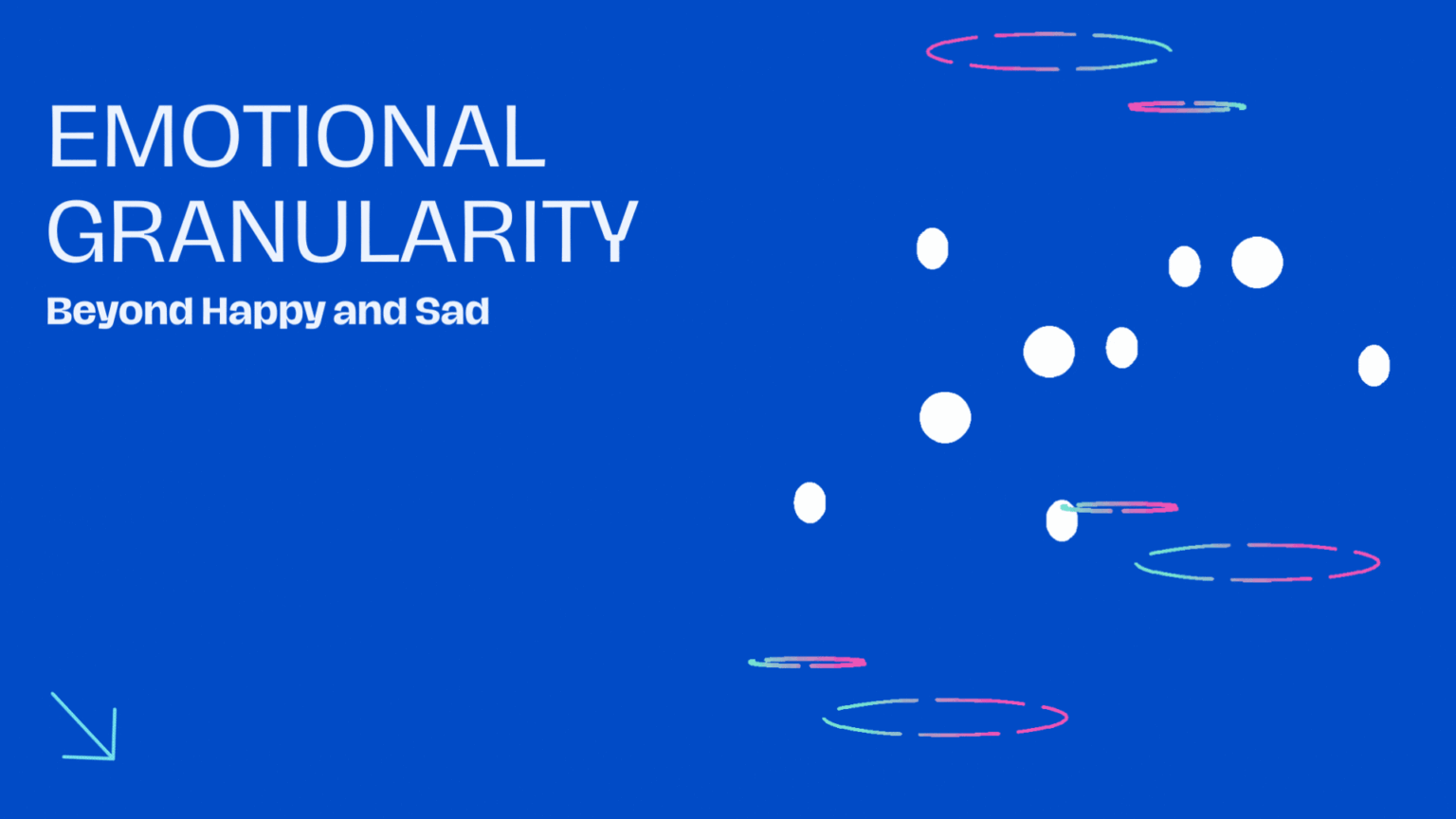“Our business is to get out of business”
Christine Padesky
There is no way Beck’s CBT is gone go out of business. Judith Becks Basics and Beyond have always been a tiny window to look through what is going on in the Beck’s Institute. This edition is interesting. The upgrade is a leap. Though it is still fixated on the quick pre-post approach. Even for mindfulness-based interventions. Some things have been there in CBT but are now presented in a new light. Like Strength-based conceptualizations. Beck’s Cognitive Therapy is known for the problem/solution-oriented approach. Adds a fresh addition of value & strength.
Strengths-Based Cognitive Behavioural Therapy
Strength-based Cognitive Behavioural Therapy developed by Padesky and Mooney is not new. It focuses on building positive characteristics to assist clients. It opens the doorway to resilience and strengthened positive beliefs. The foundation of the technique is a systematic search for the client’s strengths. Various ways to uncover hidden strengths are used. Padesky and Mooney emphasise that therapy needs an overhaul in looking for strengths. The change has to be in the therapist’s mindset and therapeutic approaches. As compared to those used when treatment is geared at alleviating suffering. Using more client development pathways of resiliency, imagery and client-generated metaphors. Strengths-Based CBT models can build human characteristics of different positive attributes. you can learn more about Strength-based cognitive therapy here. Our experience of an architectural space is strongly influenced by how we arrive at it. CBT has kept the same with the Therapeutic Alliance with therapy.
Of all the lists available. The list of positive qualities comes from the Gottman Institute. A comprehensive approach to Strength conceptualization. Judith mentions that the mapping for strength-based is quite complex. It needs an engaging conversation with the client while doing the same. Even while dwelling on adaptive automatic thoughts.
The list for the Gottman is positive emotions can be found on their Gottman website here.
Loving, Sensitive, Brave, Intelligent, Thoughtful, Generous, Loyal, Truthful, Strong, Energetic, Sexy, Decisive, Creative, Imaginative, Fun, Attractive, Interesting, Supportive, Funny, Considerate, Affectionate, Organised, Resourceful, Athletic, Cheerful, Coordinated, Graceful, Elegant, Gracious, Playful, Caring, A great friend, Exciting, Full of plans, Shy, Vulnerable, Committed, Involved, Expressive, Active, Careful, Reserved, Adventurous, Receptive, Reliable, Responsible, Dependable, Nurturing, Warm, Virile, Kind, Gentle, Practical, Lusty, Witty, Relaxed, Beautiful, Handsome, Rich, Calm, Lively, A great partner, A great parent, Assertive, Protective, Sweet, Tender, Powerful, Flexible, Understanding, Totally silly…
Principles of CBT to Principles of treatment.
Though a small change. It is important. The shift from basic principles of Cognitive Behaviour Therapy to principles of treatment. CBT now being more of an umbrella rather than a single therapy. Maybe soon we could see calling itself Beck’s cognitive therapy. One of the major changes in the principles of the treatment is the addition of values. Earlier only a goal-oriented CBT has some additions. Now mentions value-based and aspirational and Goal-oriented. Rest remains similar and with no much change.
Adaptive beliefs
There has adaptive and maladaptive in earlier versions. Thought this time there is a special mention. These beliefs are workable and had been useful earlier. Adaptive beliefs are defined as realistic and functional and not at an extreme. There is also a mention of movement from adaptive to maladaptive beliefs. Like Core negative beliefs, adaptive beliefs too can be dormant. They can be reused. The client is not aware or has left adaptive beliefs dormant as an onset of disorder or in distress. These adaptive beliefs can also be fragile and not strengthened. Sometimes you may have to develop them in therapy. Modifying the core belief section also gives access to strengthen the adaptive beliefs. It focuses on how we can strengthen adaptive beliefs. Both at the emotional as well as intellectual levels of the client. When the client is experiencing positive affect as they visualize a scene.
Through the help of images of current and historical experiences. Adaptive core beliefs and the ways to identify them when we are evaluating its roadmap. You are to identify core beliefs that are more realistic and adaptive as early in the treatment as possible. Unlike the earlier version of dealing with beliefs. Adaptive beliefs themselves. Workable Beliefs during the period and if relevant how they view others. Realistic and helpful beliefs of the world or how other people viewed them. All the adaptive beliefs we need to identify and weave them into a thread.
Action Plan & Activity scheduling
Pascal (1623–1662) wrote, “People are better persuaded by the reasons they discovered than those that come into the minds of others.”Action Plan is crucial for well-being.
The action plan is another name for homework. It is not a new chapter but a new name. The activity schedule though is an important addition to a chapter.
Why Action plan is important in Cognitive behaviour therapy.
The action plan is a new word for homework. It is very impactful. Though it was said “what is in the name” There is a lot in it.
Too many clients take exception to that term. It reminds them of the drudgery of assignments they had to do at home when they were at school. So in recent times, we’ve switched. “Homework” is now called the “Action Plan.” It conveys a sense of proactivity, of taking control.
Judith Beck
Clients find out that talking about issues in session does give an actual way out. The breakthrough comes with action. The only way they can go forward is to rediscover their interests. Perceive fresh knowledge of themselves. , New information of their surroundings, and the people around them. Implement modest changes every day. They work on new abilities (cognitive, behavioral, and emotional). Start to engage in learning and practice tasks within sessions. An action plan helps to recover and stay healthy for a longer period. The therapist ensures that the Action plan is an integral part of the session. One factor for the success of cognitive therapy is the regular use of Action plans. Homework assignments are not standard. It is a natural extension of the discussion of issues.
Therapists and clients design specific tasks in tandem. A therapist’s approach to assignments is driven by conceptualization. When it comes to identifying and modifying important cognitive and behavioral patterns. With an equal eye on the Client’s interests and abilities. Also, symptoms, motivation, therapy stage, and limitations are all taken into consideration. Action Plan also takes into consideration the challenge of the task. The complexity of the task and how much time and energy it will take. Clients and therapists may develop tasks at the moment all on their own. Therapists ask clients what they may do over the week to assist themselves. It is necessary to decide beforehand on the parameters of the Action plan. Additionally, it is necessary to identify when the task is to be completed. A realistic look to calculate if there are any mental or practical barriers. The biggest question to tackle is “How likely are you to complete this Action plan?” Let us reframe the situation. Here are a couple of concepts that go behind the Action Plan. These are evidence-based techniques that usually don’t get a mention. They don’t get that print even in the book.
Mental contrasting
Let us focus on the self-regulatory goal-setting technique known as mental contrasting. Three distinct pathways to the goal are identified in the world of achieving a goal. They are indulging, pondering, and Mental contrasting. When indulging, people imagine a happy future. Indulging skips realities/hurdles in the path of making the vision a reality. Reflecting on unpleasant elements of the current reality. with no elaboration of the desired future is another one-sided style of thought. This is a dwelling or pondering. Both are in contrast to the method of mental contrasting. It involves using a desirable future and current reality. The approach of conjoint mental elaboration. It aims to make both of these things available and provides connections between them. Positive mental contrasting depicts the future as something to strive for. Whereas negative contrasting frames the reality as something standing in the way of the goal. To highlight the importance of action. Future you want and current reality are activated, simultaneously. When people anticipate success, it sparks their motivation and increases their goal commitment.
Implementation intentions
A self-regulatory method for goal-seeking (using implementation intentions). To achieve goals. Goal commitment must be followed by successful goal striving. Beginning to accomplish your goals. maintaining one’s progress. Firing up requires being able to recognize and use the many chances to act. As well as to overcome the hesitation to act (due to the unpleasantness of the act, for example). Protecting continuing goal-directed activities from being sidetracked is critical to staying on track. To get started and remain on track through the goal-striving stage, people should have specific plans of action. Gollwitzer terms it implementation intentions. Goals or resolutions are coupled with implementation intents. It connects an appropriate opportunity to goal-directed action. Chances of achieving goals increase. An implementation intention specifies an expected external stimulus for goal-directed action.
The purpose of self-regulation is to take the self-management of activity. Recent studies show obtaining strategic automaticity enables individuals to take effective action. Action in the face of obstacles. Obstacles like Procrastination & diversions. Poor habits along with avoiding competition for their goals can be hurdles. To start effective implementation intents, it is important to have solid goal intentions. People should focus on Implementation intentions. Since some kinds of implementation intentions function better than others. As a result, individuals often find themselves faced with difficulties. They cannot rely on their instincts and goals that have been triggered on their own. This is when implementation intentions are most important. Action control via the implementation of those intents is the need. Competitive times encourages difficult and impossible goals. When a set of goals is unclear or contradictory, automating goal-directed activities can help. With implementation intents, better action starts faster. While this approach offers many advantages, there are some costs. Carrying out effective goal pursuit demands flexibility as well as persistence. A particular activity to ensure a person follows through may reduce choices.
Therapeutic alliance
Much needed attention has been given to therapeutic alliances or relationships. Earlier editions had a mere mention of an overview. A concert chapter woven around this most important concept is no surprise. Four essential guidelines are given to make it easier. Curtailing what exactly we need to do when it comes to the therapeutic alliance. The weak definition has been concretised. It also assembles types of skills. The feedback. Collaborating with the client in different ways. Making it Personalised and tailor-made. CBT reaching a stage of “one size doesn’t fit all”.
“Therapeutic relationship” may be described as an interchange between therapist and client. The interchange aims to promote emotional growth to promote transformation.
Basic components of the therapeutic alliance The effectiveness of any therapy or treatment strategy depends on several variables. Regardless of their emotional valence, they must first feel appreciated, valued, and comfortable. Only then does a client open up and share their own experiences. There are moments during the initial session when a client can become disturbed. which may prompt us to be better listeners because we realise how wounded and hurt the client is. Keeping the same motto throughout is the key. After initial sessions Questions that explore what worked can add value. “Could you tell me a little bit about what it was that I did that helped you achieve such a drastic change?”He responded after considering the question for a while, “Actually, that was simply you being yourself.”Some of our clientele appreciate our authenticity, integrity, and connection.
Our relational way is very important. when we discuss our value with clients. Their views about others and the world may change because of our interpersonal approach. The second significant general component of the therapeutic relationship is the partnership. Bordin proposed that the alliance consists of a strong “bond” and the need for mutual respect. With an overt expression of agreement about the session and treatment goals. It’s no good if a session doesn’t address the reasons a client joins therapy or their biggest problems. Obtaining more details of the problems that had brought one to treatment. The therapist needs through the proper procedures of informed consent. Consider clients attempt to comprehend the person they are seeing for the first time. Effective therapists must learn how to handle disrespectful or unpleasant conduct. Without taking it personally. Instead encourage their clients to discover a positive function in what they have to say. CBT elements” According to CBT theory, there are three main components: cooperation, empiricism, and Socratic conversation.
The first aspect of cooperation in CBT is inviting clients to take an active role. In the process, the therapist plays the role of collaborator or guide. This kind of communication is included in the therapeutic process. Those personal qualities of being attentive, compassionate, and generous apply here as well. Therapists who have these personal values are inclined to put extra effort. Like remembering clients’ life stories, which they will bring up during therapy sessions. Secondly, we assist our clients to take a more “scientific” approach. Helping them evaluate their experiences. In contrast to how they may come to therapy, our goal is to assist the client to avoid feeling. Pushed and pulled by various cognitions and emotions. Especially when instructed on how to interpret and deal with situations. Three separate, interwoven elements are as follows. The first part is called Socratic conversation. It entails a set of counselling techniques including asking, summarising, empathetic listening. Giving the client chance to recognise and express feelings. Self-reflection.
The person to whom I have a bad idea or feeling will likely react to me. As a “point of difference” for my clients, I may make a positive, different impression. By being polite, patient, and welcoming toward each person in the room. Accepting a client is letting them be who they are without attempting to alter them. If they desire to modify their viewpoint or conduct, it is my responsibility to help them. Adapting based on the characteristic of clients. Focus on the clients’ characteristics that must be taken into consideration. Similarly, it needs to apply to the therapists as well. Like “To upgrade to X” “To thine own self, and to those whom you serve, be truthful.” The role of the therapeutic relationship within generic and CBT-specific elements: Socratic questioning has been used to “make the patient more conscious of his ideas”. “investigate for cognitive distortions”“Make strategies to replace harmful beliefs with balanced ones,” and “stimulate mental development” (Beck, Emery, & Greenberg, 1985, p. 177). Socratic conversation enhances & Aids the spectrum of cognitive transformation processes in CBT. (Clark & Beck, 1999; Mennin et al., 2013). Method and an aspect of the therapeutic interaction can be Socratic. Different Types of Discovery Processes here.
CTR (Recovery Oriented CBT)
CTR has been a part of CBT for a long time. Like all the other concepts have been given special attention throughout the book. Transits the focus only from maladaptive behaviours and strategies to adaptive trends. CTR can be much more helpful to maintain and create different adaptive formulations. CT-R was designed to help those who struggle to motivate themselves. It was believed that such difficulties with motivation are biological. Paul Grant and Aaron Beck discovered that beliefs are correlated with motivational difficulties. Beliefs like “A small risk is pointless because it will be a disaster if I fail,”. Or a person who thinks “Failing even a small part is as bad as failing”. People were labelled asocial. People who do not like social events. Preferred hobbies and leisure activities without others. While in reality they simply want personal space. (Grant & Beck, 2010). CT-R was created as a means of deactivating and activating more adaptive beliefs. Beliefs that support empowerment and recovery. CT-R increased community engagement, motivation, and positive symptoms when compared to standard care. This was seen in a randomised clinical study (Grant et al., 2012). Once therapy had stopped, improvements made with CT-R were also sustained (Grant et al., 2017). Another critical finding was that, regardless of sickness duration, results were seen.
When taking action towards the realisation of goals, such difficulties inevitably arise. CT-R is concerned with empowering participants related to their experience as a result of stress. Unmet expectations, rejections, or disappointments, and other types of difficulties. In difficult circumstances, maintaining focus on what is most important is critical. Your dreams, relationships, and personal significance. Cognitive models are used to identify the maladaptive thoughts that contribute to failure. They can also be used to identify adaptive thoughts that allow us to get back on track. A pathway to return to a healthy lifestyle. From a challenge-oriented mentality to a mental outlook that is focused on adapting.
We aid clients to develop their strengths and capabilities. To enjoy their best possible self. Enhancing personal beliefs such as the belief in one’s capacity& in control. Enabling the adaptive mode to take over as the dominant mode needs healthy beliefs. This enables the upward spiral to begin. As individuals get closer to their long-term goals.
The more a person’s views that they can overcome difficulties. They are inclined to seek out and take on new opportunities with time. There has been a little touchup on value work but not in detail. ACT gives an extensive perspective on value work with clients.
Integration with Mindfulness.
It was via agreement of experts that the definition of mindfulness was arrived at. I am not kidding. Which states ” that a person must have an orientation of openness, acceptance, and curiosity while being attentive to their current experience” (Bishop et al., 2004).
It teaches you to concentrate on what’s going on now — such as interacting with another person. To be open to experiencing whatever may arise in a non-rejecting manner. The ability to maintain mindfulness is critical when clients engage in thinking processes. Maladaptive processes such as obsessing, ruminating, worrying, or self-criticism. When clients dread experiencing certain internal stimuli. Unpleasant emotions, ideas, pictures, desires, or discomfort. It is helpful for therapists to assist them in allowing for the free flow of such feelings and thoughts.
A new connection to your thoughts is developed through mindfulness. Instead of interacting with them by challenging their legitimacy, You allow them and let them be. Mindfulness helps you remain nonjudgmental while seeing and accepting your internal sensations. without attempting to alter them. So basically, you can be open, welcoming, and inquisitive while being fully present at the moment.
Mindfulness has many forms. This is one of three examples:
For those clients who obsess, worry, or attempt to conceal ideas or pictures, mindfulness of thoughts is useful.
Being attentive to one’s mental states is particularly important. Dealing with strong emotions and other unpleasant inner experiences. Self-compassion for clients who are often self-critical: that is, those who have a problem with self-acceptance.
Informal and formal mindfulness practises
Mindfulness is often divided into two categories: formal practices and informal ones. Formal Mindfulness consists of an organised period during which you sit in a peaceful location. , Concentrate your attention. Focus on one or more aspects of your experience. Keep track of how long it takes you to get your attention back to the focal point. To give you a feeling for meditation, we suggest that you just do formal meditation for a short period. Mindfulness is much more likely to be maintained if it is kept short.
Another way to think about it is that informal practice. It involves incorporating mindfulness concepts into your daily activities. Concentrating on the current activities or moment in an accepting, open, and nonjudgmental manner. When your mind becomes distracted by thinking about the future or the past, refocus on your present activity. To experience unpleasant thoughts, feelings, and/or sensations that a person is not attempting to avoid. Notice them, allow them to be present, and then refocus on the job at hand.
Self Practice
CBT urges you to practise mindfulness on your own. In the mornings, perform a structured five-minute mindfulness exercise. Routine can consists of incorporating mindfulness techniques. Such as those used while eating, toothbrushing, and getting rest in the workplace. Look at nature and appreciate it more. when we experience it and via senses.
Mindfulness means being open, accepting, and inquisitive about your current experience. Recent research has shown that mindfulness may aid in the effectiveness of therapy. Teaching mindfulness as a solo method has limited effectiveness. While integrating it within treatment increases the likelihood of better results. Help clients do mindfulness exercises regularly, utilising various methods.
Emotions
For all those people babbling that there is no consideration of emotion in CBT. Judith has come up with a whole new chapter for them. Earlier there was a chapter called identifying emotion. It dealt with techniques of distinguishing the connection. It related and differentiated automatic thoughts and emotions. It covers eliciting and strengthening positive emotions. so this is more like a big view of the attention in the cognitions as well as behavioural tendencies that decrease the arrows and. Tips of actually working to elicit and increase clients positive emotion in the session and through homework as well. A list of positive emotions has been given which goes like this. There is also a mention of a partial list of negative emotions. Clear mention unlike the earlier versions of Basics and Beyond. Special mention of “ being suspicious” has been added as one of the negative emotions. So there be a debate.










